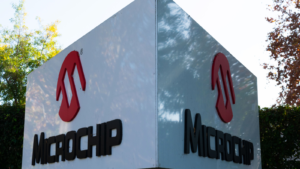![]()
The global semiconductor market will reach $613 billion in 2024, according to Statista. This makes it a great time for investors to consider the best semiconductor stocks to buy. A number of factors will drive growth, including the increasing demand for electronics, the rise of artificial intelligence (AI), and the expansion of Internet of Things (IoT).
Furthermore, the semiconductor industry is crucial in meeting the demands of electric vehicles (EVs) and energy storage systems. Both industries are expected to take off as interest rates come down and supply chain constraints alleviate in 2024. While most of the semiconductor industry has already taken off, these three companies offer hidden value in the marketplace.
Now, let’s discover the three best semiconductor stocks to buy for outsized returns!
Applied Materials (AMAT)

Applied Materials (NASDAQ:AMAT) is one of the most compelling semiconductor stocks to buy in February 2024. The stock is up 16% in the last month as investors place bullish bets on a rebound in the semiconductor equipment market.
In the 2023 fiscal year, the company faced a number of headwinds. Most notably, battling with double digit declines in spending in the wafer fabrication market. This evidently impacted their top line revenue, which saw a modest 3% YOY growth. Applied Materials was able to weather the storm, with EPS up 9% and FCF up 65% to $7.6 billion.
Looking out to 2024, Applied Materials’ top line revenue growth may continue to struggle. The company expects revenue and adjusted EPS to decline 4% and 6%, respectively. At the same time, that may seem like bad news, but a rebound in the semiconductor equipment market is good news. Furthermore, with a forward P/E of 22 and a P/S ratio of 6, they’re still cheaply valued compared to their competitors.
Microchip Technology (MCHP)

Microchip Technology (NASDAQ:MCHP) is a leading semiconductor chip manufacturer in Chandler, Arizona. The company has seen robust revenue and EPS growth over the last several years, with its quarterly dividend growing rapidly.
Their extensive product portfolio encompasses microcontrollers, (SiC) MOSFETs, gate drivers, and diode modules. This diverse range empowers them to serve a variety of industries, including automotive, energy storage, consumer electronics, and industrials. Despite a general slowdown in wafer fabrication equipment and a challenging macroeconomic environment, the company continues to invest in R&D.
Management plans to reduce inventory levels in the short term, which may impact earnings for several quarters. However, when end markets can recover, you can expect growth to reaccelerate and demand to return to a healthy level. In Q3 FY24, Microchip paid down $392 million in long-term debt. Additionally, they plan to issue a record quarterly dividend of $0.45 per share in March, reflecting 26% YOY growth.
ON Semiconductor (ON)
ON Semiconductor (NASDAQ:ON) remains one of the best-in-class semiconductor stocks to buy in 2024. Despite a tougher macroeconomic environment in 2023, the company delivered impressive bottom line growth.
ON Semiconductor is one of the leading SiC-based semiconductor companies in the United States. Demand for SiC modules slowed in 2023 as higher interest rates impacted the solar, EV and energy storage markets. However, the company delivered record automotive revenue of $4.3 billion in FY23, up 29% YOY. This truly proves the resilience of their SiC business, and the long term outlook remains strong.
Shareholders can look forward to ON Semiconductor diversifying away from SiC and strengthening their analog and mixed signal platforms. This will be a game changer, increasing the company’s long term value proposition. Furthermore, they expect to produce 1 million SiC wafers per year after expanding their production facility in Bucheron, South Korea. With a trailing P/E of 16, this might be the best long term bet on the burgeoning SiC market.
On the date of publication, Terel Miles did not have (either directly or indirectly) any positions in the securities mentioned in this article. The opinions expressed in this article are those of the writer, subject to the InvestorPlace.com Publishing Guidelines.





